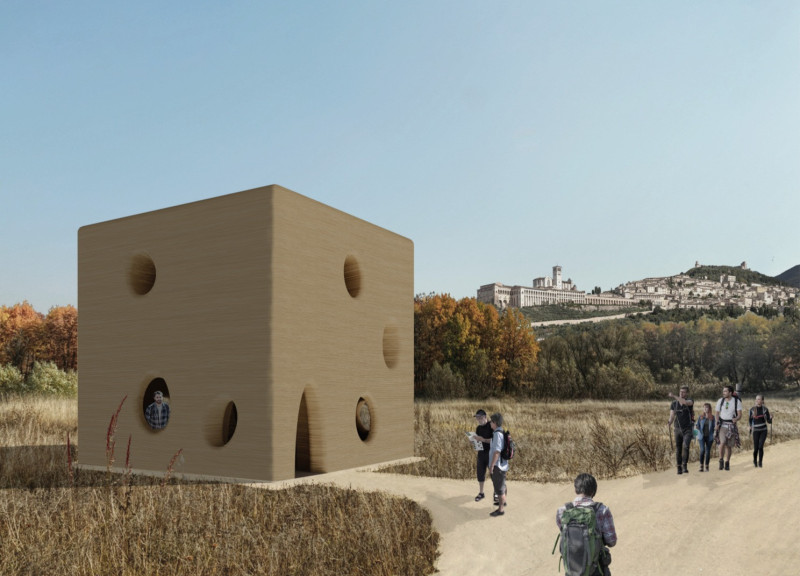5 key facts about this project
The project emphasizes a subtractive approach to architectural design. Unique circular openings punctuate the solid form, facilitating natural light, creating dynamic visual connections between the interior and exterior, and promoting air circulation. The pavilion's geometry is derived from organic forms, creating a fluid spatial experience that encourages user interaction and engagement with the landscape.
Subtractive Design Approach
The design methodology of the Antinomia Pavilion is noteworthy in its subtractive focus. Rather than adding materials to create volume, the architecture uses the removal of mass to define space and light. This approach fosters an intriguing dialogue between the building and its environment. The reduction of mass aligns with the functional purpose of the pavilion, serving as a contemplative retreat for visitors. Each void in the structure aids in accentuating the sense of openness and facilitates a connection with the natural surroundings.
Integration of Materials
The choice of rammed earth is integral to the project's identity. It not only offers structural stability but also blends naturally with the landscape, taking advantage of local resources. The tactile quality of the earth reinforces the pavilion's intention as a space for human interaction and comfort. This material choice speaks to contemporary design principles that prioritize environmental sustainability.
The interplay between the solid rammed earth walls and the circular openings also highlights the importance of natural light in the internal spaces. The careful articulation of these features ensures that interior conditions vary throughout the day, enhancing the overall experience within the pavilion.
The Antinomia Pavilion invites further exploration into its architectural plans, sections, and detailed designs. Engaging with these elements will provide a deeper understanding of the architectural ideas at play and the thoughtful considerations that define this unique project. For those interested in sustainable architecture and innovative design approaches, examining the pavilion's specific features and functions will offer valuable insights.























